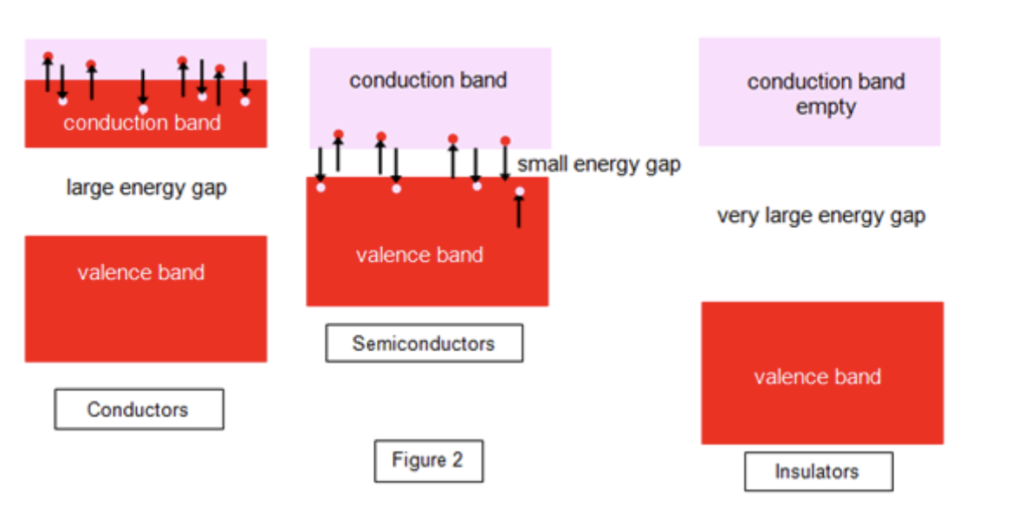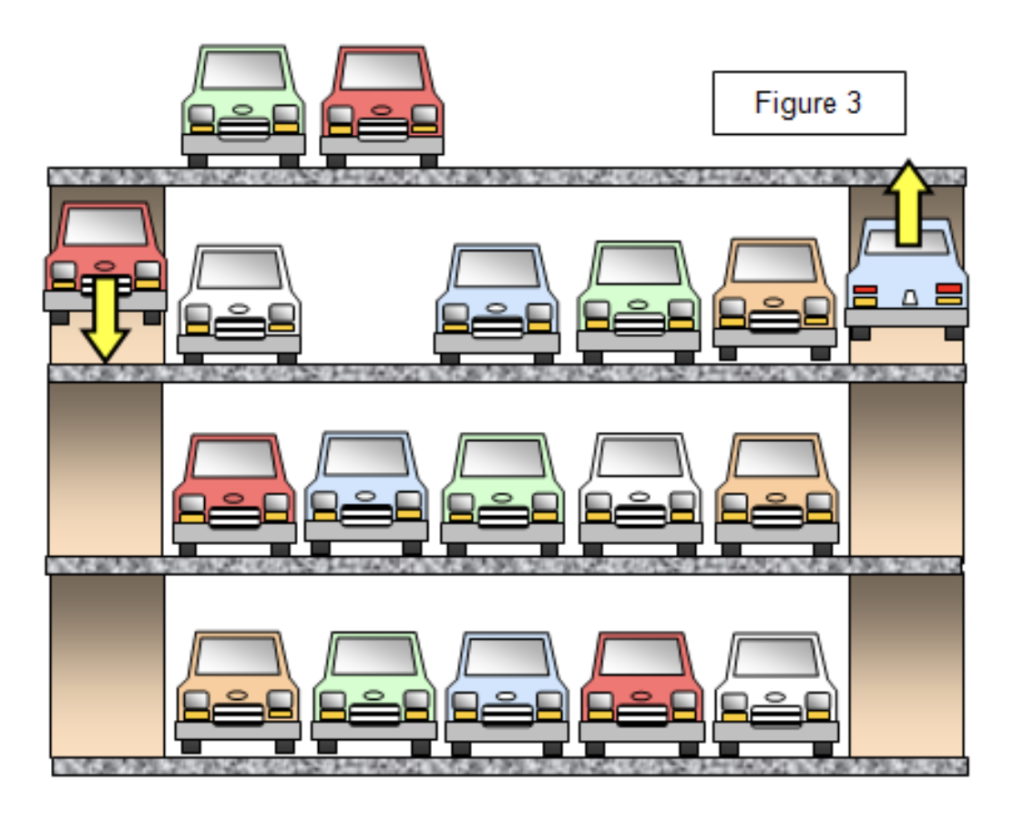The characteristics of basic semiconductors
In some of our previous articles on Electrical and Electronic Engineering we’ve looked at induction, waveforms and capacitance. We’re now going to move on to looking at semiconductors and how they fit in to these principles.
What is a semiconductor?
Semiconductors form the basis of all microprocessors and integrated circuits. You could say their invention has revolutionised our lives! You might be familiar with common conductors made up of copper, but less familiar with semiconductors. They can be made of silicon, germanium, carbon, selenium gallium arsenide or lead sulphide.
An important difference between conductors and semiconductors lies in the number of free electrons that are present in the material. We can use the band theory of solids to consider these differences.
Think about an atom, where electrons are restricted to well-defined energy levels, and energy changes within the atom only take place between one level and another. In a solid, the atoms are linked together and the electrons can occupy a whole series of energy levels grouped into bands, as you can see in Figure 1 below:

The difference in energy between levels within the band is very small compared with the energy gap between the bands. The electrical differences between one type of solid and another lie in the different arrangements of the bands.
Figure 2 below shows the band structures of a conductor, semiconductor and insulator:

What is a conductor?
In a conductor, the valance band is full of electrons, while the conduction band has some free electrons and many empty energy levels. The addition of a very small amount of energy will allow electrons to move within the conduction band, some rising to a higher level and others returning to lower levels. This movement of electrons is called electrical conduction.
In some conductors, the valence band and the condition band actually overlap. This effectively gives a partly filled top band.
Intrinsic semiconductors
An intrinsic semiconductor is a material that is a semiconductor in its own right, where nothing has been added to it.
In the intrinsic semiconductor, the valence band is full, but the conduction band is empty at very low temperatures. However, the energy gap between the two bands is very small, and so electrons can jump across it via thermal energy alone.
The conductivity increases with temperature as more and more electrons are liberated. Semiconductors have negative temperature coefficients of resistance. For germanium, for example, the energy gap is 0.66 eV and for silicon, it is 1.11 eV at 27 oC. When an electron jumps to the conduction band, it leaves behind a space or hole in the valence band.
This hole is effectively positive and since an electron can jump into it from another part of the valence band it is as if the hole itself were moving!
Conduction
Conduction can take place either by negative electrons moving within the conduction band, or by positive holes moving with the valance band.
A semiconductor may be thought of as similar to an almost full multi-story car park, the cars representing the electrons and the spaces the holes.
Since no cars can enter or leave they will move around to fill a space, creating a new space for another car, as you can see in Figure 3 below:

Keep an eye out for our next articles giving you even more interesting facts on semiconductors.
Interested in our courses?
You can read more about our selection of accredited online electrical and electronic engineering courses here.
Check out individual courses pages below:
Diploma in Electrical and Electronic Engineering
Higher International Certificate in Electrical and Electronic Engineering
Diploma in Electrical Technology
Diploma in Renewable Energy (Electrical)
Higher International Diploma in Electrical and Electronic Engineering
Alternatively, you can view all our online engineering courses here.
Recent Posts
Exploring Induction and Synchronous Motors in Modern Engineering
Exploring Induction and Synchronous Motors in Modern Engineering Introduction Electric motors are essential machines that convert electrical energy into mechanical energy, powering everything from household appliances to large industrial systems. Among the most widely used types are induction motors and synchronous motors. Both play a critical role in modern engineering, yet they differ in their […]
Exploring Series, Compound, and Stepper Motors in Electrical Engineering
Exploring Series, Compound, and Stepper Motors in Electrical Engineering Introduction Electric motors are at the heart of countless machines and devices, from household appliances to large industrial systems. Among the many types of motors used in electrical engineering, series motors, compound motors, and stepper motors hold a special place due to their unique characteristics and […]
Inside the DC Shunt Motor: Design, Operation, and Performance
Inside the DC Shunt Motor: Design, Operation, and Performance Summary DC shunt motors remain a foundational technology in electric machines, prized for their reliable speed regulation and versatility in many control applications. In this post, we’ll explore the inner workings, design features, and performance characteristics of DC shunt motors, covering: Whether you’re studying electromechanical systems […]

